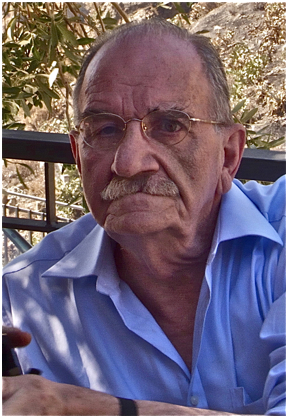Nicholas Neocles Ambraseys 1929-2012
Nick Ambraseys died in his Putney home, in London, on 28 Dec 2012 a few weeks short of his 84th birthday. Born in Athens 19 January 1929, he acquired his middle name from his father Neocles Amvrasis, and from his Alexandria-born mother, Cleopatra Yambani, he learned Arabic. He was educated at the National Technical University of Athens where he received a diploma in Rural Engineering in 1952. For his mandatory Military Service he chose the Hellenic Navy, and in 1954 while still completing his Navy duties he was appointed to the staff of the Dept. of Fluid Mechanics at the National Technical University of Athens.

On 9 July 1956 a M~7.5 earthquake occurred near Amorgas, roughly 80 km NE of Santorini, resulting in the largest 20th century tsunami in the eastern Aegean. He became interested in the study of this earthquake and its tsunami while investigating its impact on the stability of harbor works throughout the Greek Archipelago. The investigation challenged his analytic skills but also triggered two interests that were to dominate his subsequent career - the study of earthquakes and the study of their historical records. His 1960 article discussing the 1956 tsunami lists 46 previous tsunami from 1400BC to that date and remarks that "in none of the references is the original source of information given... and in many of the cases the dating of events is incorrect" a problem whose solution required him to create what has essentially become a new discipline, the establishment of a multimillennia catalog of historical earthquakes (Ambraseys, 1960). He was not the first to tackle the issue, since there already existed the remarkable compilations of the Mallets, father and son, whose global seismicity map of 1858 (which outlined the world's plate boundaries a century before the birth of plate tectonics) he often showed as one of the great achievements of Victorian archival investigations, but he was the first to lay down the ground-rules for avoiding error, repetition, and spatial and temporal conflation.
One of his first contributions to the historical catalog was to alert the seismic community to anachronisms - errors in seismic catalogs caused by the different calendars in use by the world's civilizations. These had lured several unwary seismologists into introducing newly "discovered" historical earthquakes into catalogs that already listed the earthquake under a different date. Thus we read in his 1962 catalog of Mediterranean tsunamis (Ambraseys 1962a) where he proposed numerous corrections to the works of Mallet, Hoff and Perrey "The translators of Armenian texts have not perceived the chronological difficulties that occur in the manuscripts of Moses and Acogh'ig and have committed an anachronism of exactly 30 years. " He subsequently identified (Ambraseys 1962b) two dozen bogus earthquakes listed in 20th century catalogues whose dates were derived from an 1843 translation of a 15th century Arabic text, which listed these events in the Muslim Al Hijra lunar calendar, and which had been unwittingly rendered as A.D. calendric dates. In these two 1962 works he demonstrated his extraordinary talent to track down original sources of authentic data. These investigations in the next 50 years were to take him to the great libraries of Europe and Asia, and to unexpected hunting grounds: in the Baghdad library before it was ransacked, to the British Consulate in Kabul where he photographed on its walls. a painting depicting the castle of Jellalabad damaged by the 1842 earthquake in the first Afghan war, to village archives in remote parts of Iran, or to Gutenberg and Richter's worksheets in the Millikan Library, Pasadena.
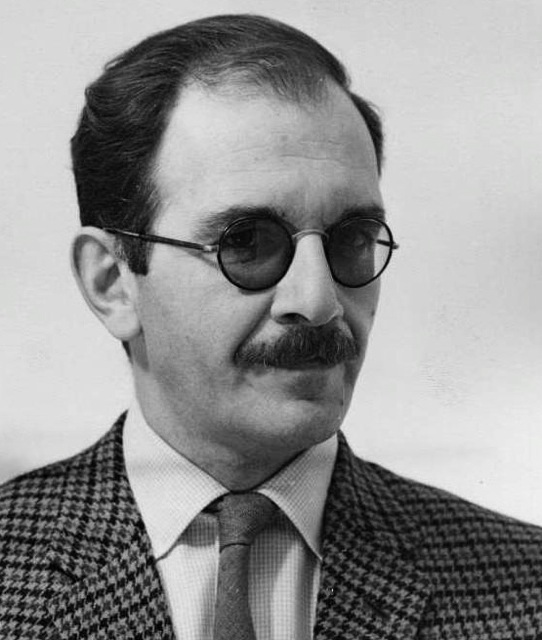
His ability to read Greek, Latin and Arabic texts and a half dozen European languages, and to a lesser degree Cyrillic, Farsi and Urdu documents meant he was able to follow the original accounts of historians at first hand and to verify, correlate and compare different accounts like few of his predecessors. For those languages of which he had no knowledge he would sometimes sit with translators to weigh alternative renditions as they interpreted the original text. During his life he collected many hundreds of accounts of earthquakes in a dozen languages, which he stored in an office lined from ceiling to floor with shelves stuffed with books and reference materials.
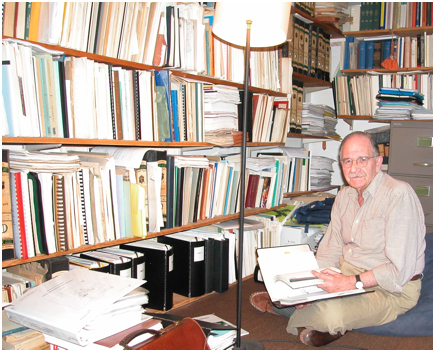
Nick Ambraseys in his study 17 June 2003
His interpretations of historical records were tempered by numerous first hand experiences of villages and towns recently damaged by earthquakes, and by the response of villagers to the rebuilding of their towns after these earthquakes. He frequently remarked there was a half-life to the memory of an earthquake of about one and a half generations, such that grandchildren rarely benefitted from the earthquake experiences of their ancestors. An early contribution was to recognize that the domino-like westward rupture of the North Anatolian fault in the 20th century, was merely the most recent of at least two previous similar sequences in the previous 2000 years (Ambraseys, 1970), and that periods of seismic activity alternated over many hundreds of years between northern and SE Turkey (Ambraseys, 1971). He subsequently discussed evidence for similar fluctuations in long term seismic activity between eastern and northern Iran (Ambraseys and Melville, 1982), and long term fluctuations in seismic productivity on the Dead Sea fault zone (Ambraseys, 1975), the Sea of Marmara and the Gulf of Corinth (Ambraseys, 2006; 2009), providing overwhelming evidence that local seismic processes were not stationary.

Variation in seismic productivity over 1600 years in north and east Turkey (Ambraseys 1971).
In many parts of the world this finding has dire consequences for estimating future seismic risk from statistics based on the brief post-1900 instrumental seismic catalog alone. This is because the conversion of observed hazards into future seismic risk assumes stationarity. One of the tools for estimating the recurrence of future damaging earthquakes is based on the famous Gutenberg-Richter relation, N=a-bM, that basically indicates that the number of earthquakes in a given area, of a certain magnitude, is typically 10 times more numerous than the number of earthquakes with the next largest magnitude. In most instrumental catalogs b=1 and "a" is a constant and hence it is graphically possible to estimate the probable recurrence rate of infrequent large earthquakes. Ambraseys' discovery questioned the stability of the constant "a" which, in some regions, fluctuated significantly over centuries. A well behaved "b-value" (easily determined from a short instrumental seismic catalog) is of little value for the forecast of future seismic productivity in regions where the "a value" cannot be relied on to remain constant. The value of the new historical record was thus demonstrated.
The publication with Charles Melville of his 240 page history of Persian earthquakes in 1982 established a new paradigm for the methodical examination of historical earthquakes. For the first time source materials from libraries, government archives and local inscriptions were combined with detailed fault rupture mapping, engineering, statistics and quantitative seismology. The study digs deep beneath the listing of historical records by examining the possible incompleteness wrought by the vagaries of two millennia of conquest, administrative accounting, exploration and accessibility, including the changes in reporting caused by the penetration of travelers, telegraphs and consular espionage. The text moves on to population distributions and building styles before launching into case histories of earthquakes from the fourth century BC to 1978. For the skeptical reader the conclusions wrested for each earthquake are qualified and supplemented in 30 pages of explanatory footnotes. The work ends with lists of fault slip, rupture length and magnitude, with a quantitative assessments of magnitude scales, intensity, attenuation and moment release. In their introduction they apologize that "one disadvantage of an interdisciplinary study lies in the demands it makes on its audience", but that "the work should be of interest to the orientalist, historical geographer or sociologist, as well as to the earth scientist and engineer."
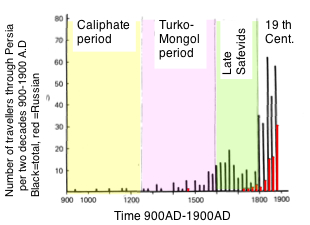
Accounts from travellers through Persia (Ambraseys and Melville, 1982, Fig. 1.3). The challenge in establishing a homogeneous two millennia seismic catalog depends on an awareness of reporting bias caused by population density and the accessibility of trade routes and communications.
His co-authored books synthesize and correct former catalogs, including his own, listing both refuted entries and irrefutable facts, for without a clear statement of both, later writers might be tempted to re-insert back into our mutual seismic history, "fake quakes" and inflated appraisals of real ones. He was particularly anxious to moderate perceptions expressed by authors keen to interpret the demise of ancient societies due to earthquakes (Ambraseys, 2005) -"Careful examination of the aftermath of large, well studied earthquakes in the eastern Mediterranean regions over the last 25 centuries shows that earthquakes seem to have had little, if any, serious long-term influence on historical developments " (Ambraseys, 1972; 2009). With characteristic humor he cautions that the invocation of earthquakes as catalysts for, if not biblical disaster, disasters of biblical proportions, echoes Abraham Kaplan's parable, where a drunkard searches for his house-key lost some distance away, under a street lamp, because there is more light there.
His quest for historical documents in the early seismic observatories of Europe and elsewhere led him to deplore the abandoned status of many early seismograms, sometimes uncataloged, sometimes decaying in damp basements, or gathering grime in scattered closets guarded by curators ignorant of their scientific value. In collaboration with others he has gone to considerable lengths to preserve early records for posterity, and in later years worked with numerous collaborators to archive Europe's increasing numbers of digital and analog strong motion records in a digitally accessible repository (Ambraseys et al., 2002, 2004). 
Qanats offset by ground ruptures of the Dasht-e-Bayaz earthquake of 1968.
Although almost 2/3 of his scientific output was on historical earthquakes, his contributions as a teacher and practitioner of earthquake engineering were no less important. In 1958 following his PhD on the seismic stability of earth-fill dams at Imperial College he was appointed to successive positions in the Department of Civil Engineering, as Lecturer in 1958, Reader in 1968, and as a Full Professor in 1974. After his retirement in 1994 he was appointed a Senior Research Investigator, with no diminution in his research output. One third of his 320 articles, and four of his six books were written after his retirement. Among his earliest few articles are several on the dynamic behavior of soils, that attracted the attention of Nate Newmark who in 1960 offered him a visiting Professorship at the University of Illinois at Urbana-Champaign. Discussions there (1960-61) led to the formulation of Newmark's sliding block method, which permits first-order calculations of landslide instability (Newmark, 1965).

Medvedev, Dubvov and Ambraseys in Skopje 1964. Medvedev was the lead author of the MSK intensity scale. In 1998 Ambraseys was awarded the Freedom of Skopje for his role in reconstructing the city, 80% of which had been demolished in the July 1963 Mw=6.1 earthquake. Click here for other photos.
In 1968, the first of many PhDs to be awarded a doctorate in Nick's newly formed Imperial College Engineering Seismology Section was Sarada Sarma who further developed methods to quantify the seismic stability of slopes and dams (Ambraseys and Sarma 1967;1968). With Sarma he published an article providing the physical basis for quantifying the delayed liquefaction of saturated soils following strong shaking in earthquakes, a topic he was to return to in later years. (Ambraseys and Sarma, 1969; Ambraseys, 1988;1991).
A photograph of a girl amid the ruins of her village photographed by Ambraseys during one of his post earthquake missions (The Hasseblad he used for many of his photographs was later stolen). Click for larger image.
United Nations earthquake investigations: The painstaking compilation of historical earthquake data would have been a lifetime's work for a dedicated historian or scientist, but in addition, between 1963 and 1981, Ambraseys undertook numerous engineering investigations of earthquakes as they occurred, often leading earthquake investigation teams for UNESCO: Iran (1962, 1965, 1967, 1968, 1970, 1972, 1973, 1974, 1978), Africa: Uganda, Ruanda, Kenya, Congo, Tanganyika (1962, 1964), Jugoslavia (1963, 1964, 1965, 1966, 1967, 1968, 1979), Turkey (1966, 1967, 1969), Nicaragua (1972, 1973), Pakistan (1975; 1977, Italy (1976), Romania (1977), Algeria (1980; 1983), and Greece (1969). In these reports and publications Ambraseys has left a legacy of data suited to quantifying rupture lengths, surface slip, earthquake magnitude and observed Intensity, materials that he subsequently mined in theoretical articles on scaling laws, and comparisons of magnitude scales. An often cited example of the new dimension he brought to earthquake field studies are the several articles he co-authored on the Dasht-e-Bayaz surface rupture of 1968, which had clearly slipped on numerous occasions in the past millennia as evidenced by multiple offsets of the qanat systems, the traditional underground aqueducts of the Iranian desert (Ambraseys and Tchalenko, 1969; Tchalenko and Ambraseys, 1970; Ambraseys, 2009).
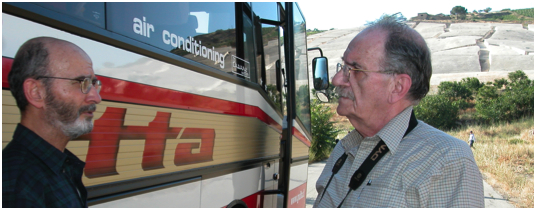
Tousson Toppozada and Nick Ambraseys near Alberto Burri's encapsulated concrete earthquake memorial to the town of Gibellina, Sicily destroyed by the 1968 Belice earthquake
Dams: On numerous occasions he advised the U.S. Army Corps of Engineers, Vicksburg, Mississippi, on the earthquake resistant design of dams, and his 1973 lecture notes form fascinating reading for their exemplary explanations of design methodology. He consulted on the design and siting of nineteen large dams in seismic environments. Among these are the Mangla and Kalabagh Dams, Pakistan; Hong Kong Water Scheme, Hong Kong; Gheshlagh and Sar Cheshmeh Dam Projects, and the Karun II & III Dams, Iran; Chira_Piura Dam Project, and the Mantaro Irrigation Project, Peru; Yarmuouk Valley and the Zarqua Project, and the El Mukheibeh Dam, Jordan; Hamam Grouz Dam, the Jijel Steel Plant, and the Cheliff Dam Project, Algeria, Stiegler Gorge Project, Tanzania.

A view of the Mangla Dam in the foothills of the Pir Pinjal, Pakistan.
Honors:The quality of his engineering, historical-research contributions has been rewarded by scientific honors from many learned societies: the Busk Medal for Scientific Discovery from the Royal Geographical Society (1975), Fellow of the Royal Academy of Engineering (1985), Honorary Fellowship of the Society of Earthquake Engineering & Structural Dynamics (1986), Honorary Fellowship of the International Association of Earthquake Engineering (1992), Honoris Causa from University of Athens (1993), Member of the European Academy (1997), Award of the Freedom of the City of Skopje (1998), Fellowship of the City and Guilds of London Institute for Outstanding achievement (2000), the William Smith Medal of the Geological Society of London (2002), in 2006 the Harry Fielding Reid Medal of the Seismological Society of America, Fellow of the Institution of Civil Engineers, Fellow of the Geological Society of London, and Fellow of the Royal Geographical Society. In 2008 he was elected a Legend of Earthquake Engineering by the Asian-Pacific Network of Centers for Earthquake Engineering Research (ANCER). He was a fellow of the Academy of Athens and actively participated in its sessions. He was co-founder of the Journal of Earthquake Engineering and has served as editor of numerous journals on soil mechanics and earthquake engineering. He gave the British Geotechnical Society's 2004 Rankine Lecture, and in 1987 the First Mallet-Milne Lecture, of the Society for Earthquake and Civil Engineering Dynamics, London. A biannual Distinguished Lecture Award is named in his honor by the European Association for Earthquake Engineering.
Anecdotes from colleagues and students: His students remember him as a demanding advisor, simultaneously expecting excellence and productivity. His lectures were memorable for their striking analogies and parallels that Nick conjured effortlessly as he explained the theme of his talk. Colleagues remember him as a kind and generous conversationalist, interested in everything, and armed with a mischievous sense of humor. For example when asked by the eminent seismologist Rothe who was justly proud of French contributions to world literature, which of the many French epic novels was his favorite, Nick responded without hesitation "Asterix".
He disliked conferences, but was frequently invited to give plenary addresses. As a result he delighted in poking fun at them "We are in Rome for a meeting entitled the mitigation of earthquake hazard in Turkey. The absurdity of the title of the meeting matches that of its agenda. You can mitigate risk but not hazard" and at the venue of another " The hotel is a five-star concentration camp". He never used business cards, and when he was given these at meetings, or by taxi drivers or tradesmen, he gave them out at random at the next meeting. One year his plumber was delighted to receive a Christmas-card from a Japanese seismologist.
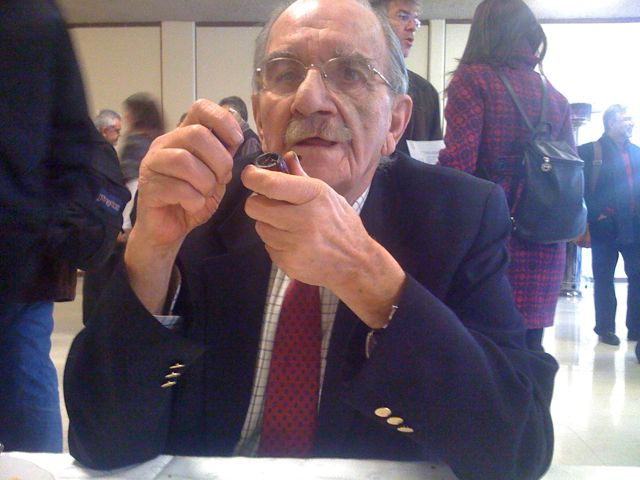
In his study while stuffing tobacco into a well-worn pipe he would set his visitor at ease with some amusing anecdote "Did I ever tell you the story about the tide gauge that mysteriously indicated a miniscule tidal range? The Navy had accidently installed it on a floating Normandy Landing barge." Others recall anecdotes about him. While crossing the border from Iran to Pakistan without an appropriate visa he convinced the border guards of his right-to-passage by producing on each occasion an impressive document boasting a green-and-gold, sun-emblazoned shield, surmounted by rampant angels, heraldic lions, and a crown. It was a grocery receipt from Harrod's of London. A story from his Illinois days is that when snow started falling after an evening dining at the Newmark's house, Nate gave him the keys to his car. Not being able to drive, and not wanting to upset his host, he took the keys and walked home with them. His non-existent driving license and disinterest in politics gave him further trouble in Illinois when he was unable to identify himself to the local police who stopped him for returning home at night in violation of a curfew of which he had no knowledge. Back in London an M.Sc student's grades were being reviewed by his Imperial College examiners, who were puzzled why he had completely failed Linear Finite Elements but had an exceptionally high score in Non-Linear Finite Elements. Nick's comment was "He obviously couldn't think straight".
He was always generous with praise for the energy of others. Returning from a post seismic investigation he remarked of a colleague "I don't know how he did it - he mapped fractures at a trot in the blazing sun all day on a pre-dawn bowl of yoghurt" The same colleague remarked that in a large aftershock, Nick, instead of running out of the building with his companions at the breakfast table, hurriedly switched on his tape recorder to capture the sound of the building creaking and of people shrieking in alarm. Others note he was always careful with hotels in the mezzoseismal area, usually doing an engineering assessment of its structural potential before reserving a room.
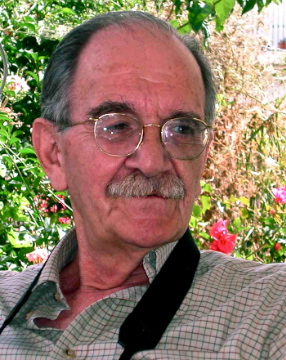
He was quite outspoken at meetings, but in a congenial way. He once walked up to an engineering presentation of seismic risk stabbing his finger in the middle of a low PGA contour, with the comment that perhaps the speaker might wish to reconsider his perception of low risk in the region. Unrecognized by the non-Arabic speaking presenter, near his pointing finger was printed in cursive Abjad script "Djebel Zilzel"- Earthquake Mountain. Not everyone understood his sense of humor. For example, at one meeting he prefaced his talk by citing his colleague Eric Brown "the professional who designs structures, the shapes of which he cannot analyze, using materials the properties of which he does not know, to resist earthquakes he cannot assess, but in such a way that his client is not aware of it", but most of his colleagues knew that such utterances were tongue-in-cheek. On one occasion as he was about to deliver a conference talk, a member of the audience jumped out of his seat and announced earnestly to the audience " I want to say that I disagree with everything in the next presentation".
Earthquakes don't kill people; buildings do. Nick's life of engineering and historical studies has left us with at least two sound bites that will resonate for many generations: "Earthquakes don't kill people; buildings do." "The collapse of buildings in earthquakes are not acts of God. All too often nowadays they are acts of criminal negligence".
In 1987 he wrote to me that funding for field work was dwindling in the UK " for this reason I have started now writing up all the material that has accumulated in the past 20 years". Twenty-five years, 170 articles and 6 books later he remarked that he had sufficient materials in his home library to keep his pen busy until he was aged 150. He was working on several publications in 2012, including three that were unfinished. Nick's legacy of a half century of publications quantifying more than 2000 years of earthquakes will endure forever. Those who knew him have lost a friend and an inspiration. The world has lost a truly great scientist.
Acknowledgements
These personal recollections were made possible by the kindness of Xeni Ambraseys and Kyri Argyropoulos, and with recollections from numerous colleagues who shared Nick's friendship over the years: Paola Albini, Muawia Barazangi, Julian Bommer, Amr Elnashai, John Douglas, Susan Hough, James Jackson, Vassiliki(Vicki) Kouskouna, Mustapha Meghraoui, Roger Musson, Anastasios Sextos and Costas Synokalis.
Partial bibliographies of his 320 articles may be found at The Earthquake Engineering Online Archive, http://nisee.berkeley.edu/elibrary/list?a=5930&start=1, and at the Imperial College homepage http://www3.imperial.ac.uk/people/n.ambraseys/publications
A Eulogy written by Prof. Atila Ansal appears in the Bulletin for Earthquake Engineering
Link to Full Bibliography- 320 articles, 6 books (Bilham, 2013).
References cited above
Ambraseys, N. (1962a) Data for the investigation of the seismic sea waves in the Eastern Mediterranean , Bull.Seism.Soc.Amer. vol.52 895 913.
Ambraseys, N. (1962b), A note on the chronology of Willis of earthquakes in Palestine and Syria , Bull.Seism.Soc.Amer., vol.52, pp 77 89.
Ambraseys, N., Sarma, S.K. (1967) The response of earth dams to strong earthquakes , Geotechnique, vol.17, pp.181 213.
Ambraseys, N., Sarma, S.K. (1968) Large earthquake forces on gravity dams , Nature, vol.219, pp.1354 56.
Ambraseys, N. (1970) Some characteristic features of the Anatolian fault zone Tectonophysics, 9, 143 65.
Ambraseys, N. (1971) Value of historical records of earthquakes Nature, 232, 375 9.
Ambraseys N. (1988) Liquefaction-induced ground failures , Proc. 1st Europ. Sch. Seism. Hazard Ass., Athens
Ambraseys, N. (1975) Studies in historical seismicity and tectonics , Geodynamics Today, The Royal Soc., pp.7 16, London
Ambraseys N. (1991) Liquefaction induced ground failures in Earthquake Hazard Assessment, ed.R. Fantechi, CEC Publicastion, pp.151 169
Ambraseys N. (2005) Archaeology and neo-catastrophism, Seism. Res. Lett., 76, 560-564
Ambraseys N. (2006) Comparison of frequency of occurrence of earthquakes with slip rates from long-term seismicity data: the case of Gulf of Corinth, Sea of Marmara and Dead Sea Fault zone, Geophys. Journ.Int. 165 (2), 516-26
Ambraseys, Nicholas (2009), Earthquakes in the eastern Mediterranean and the Middle East: a multidisciplinary study of 2000 years of seismicity, Cambridge Univ. Press pp. 968. (ISBN 9780521872928)
Ambraseys, N., Tchalenko, J.(1969), The Dasht e Bayaz, Iran, earthquake of August 31 1968 Bull. Seism. Soc. Amer., 59, 1751 92.
Ambraseys, N., Melville, C. (1982). A history of Persian earthquakes, Cambridge Univ. Press, pp.240 ISBN:9780521021876
Ambraseys, N., and S. K Sarma (1969), Liquefaction of soils induced by earthquakes . Bull. Seism. Soc. Amer., vol.59, pp.651 64
Ambraseys, N., Smit, P., Sigbjornsson, R., Suhadolc, P. and Margaris, B. (2002), Internet-Site for European Strong-Motion Data, European Commission, Research-Directorate General, Environment and Climate Programme. http://www.isesd.hi.is/ESD_Local/frameset.htm
Ambraseys, N., Smit, P., Douglas, J., Margaris, B., Sigbjornsson, R., Olafsson, S., Suhadolc, P. and Costa, G. (2004), Internet-Site for European Strong-Motion Data, Bollettino di Geofisica Teorica ed Applicata, vol. 45, no. 3, pp. 113-129.
Ambraseys, Nicholas (2009), Earthquakes in the eastern Mediterranean and the Middle East: a multidisciplinary study of 2000 years of seismicity, Cambridge Univ. Press pp. 968. (ISBN 9780521872928).
Bilham, R., (2006), Citation Harry Fielding Reid Medal to N.N. Ambraseys, Seism. Res. Lett. 77(5), 599-602.
Newmark, N. M. (1965) Effects of earthquakes on dams and embankments. Geotechnique, 15 (2) 139-160.
Okal., E. A., C. E. Synolakis, B. Uslu, N. Kalligeris and E. Voukouvalas, The 1956 earthquake and tsunami in Morgos, Greece, Geophysical Journal Int., 178, 1533-1554.
Tchalenko, J., and N. Ambraseys (1970), Structural analysis of the Dasht e Bayaz earthquake fractures , Bull. Geol. Soc. Amer., vol.81, pp.41 60.
